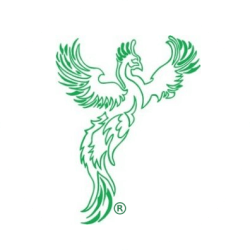Learning therapy for children and juveniles
AD(H)S - attention deficit (hyperactivity) disorder
 An attention deficit disorder is defined as a plurality of behaviors such as dreaminess, easy distraction, impulsiveness or motor restlessness. It could also be called an “inner” form of hyperactivity, because the origins are largely the same.
An attention deficit disorder is defined as a plurality of behaviors such as dreaminess, easy distraction, impulsiveness or motor restlessness. It could also be called an “inner” form of hyperactivity, because the origins are largely the same.
Hyperactivity is an emotional behavioral disorder that usually manifests itself through impulsiveness and physical restlessness.
One cause from a spiritual point of view lies in the non-lived 2nd phase of defiance (2nd-3rd year of life) and the rejection of the parents during the phase after deep proximity (from 3rd year of life).
During the time of pre-school, the problem really becomes apparent: “The child experiences inner compulsion, which also comes towards the child on the outside.” If, for example, the parents and/or the teacher are long-winded, the child becomes impatient and the “thread of patience” tears for him because he is short of breath. At this point it becomes apparent that the subject
of hyperactivity is an unredeemed energetic lung theme. Hyperactive children and adults are predominantly “lung types” who run out of “air” in their compulsiveness without the possibility of implementing their ideas. Thus the urge to move and the shortness of breath stand opposite the long-winded everyday life. Shortness of breath increases the release of happiness hormones, i.e. that the hyperactive person strives for happiness because he feels unhappy in his everyday life. Also see the diagnosed problems with the dopamine balance and excess glucose in the brain.
Dyscalculia - arithmetic impairment
 Dyscalculia is a type of arithmetic impairment caused by the brain of the affected person. Due to the dominant shift of the hemispheres of the brain, people with dyscalculia are increasingly at home in the right, creative hemisphere of the brain when they are thinking.
Dyscalculia is a type of arithmetic impairment caused by the brain of the affected person. Due to the dominant shift of the hemispheres of the brain, people with dyscalculia are increasingly at home in the right, creative hemisphere of the brain when they are thinking.
The basic problem corresponds to the problem of dyslexia, the weakness in reading and writing.
Although the dyscalculic is a creative, creative “thinker”, he may have difficulties in the left hemisphere of the brain where analysis, arithmetic, spelling, logic, etc. are concerned.
Since the dyscalculic has an intuitive, multi-layered and pictorial thinking as a base, he needs a broad offer on many levels in the therapy, so that he can build himself one or the other ” mnemonic bridge “, so that his brain hemispheres harmonize themselves and so left and right brain hemispheres come into agreement and co-operate effectively.
dyslexia - reading and spelling weakness
 Dyslexia is a special form of reading spelling weakness that has its cause in the brain of the affected person.
Dyslexia is a special form of reading spelling weakness that has its cause in the brain of the affected person.
Due to the dominant shift in the brain, the dyslexic is more likely to think in the right hemisphere of the brain, with spelling in the logical left hemisphere.
Although the dyslexic is a creative, creative “thinker,” he may have difficulty in the left hemisphere of the brain where analysis, spelling, logic, etc. are located.
Since dyslexics are based on intuitive, complex and pictorial thinking, they need a wide range of therapies on many levels so that they can build themselves one or the other “mnemonic rhyme”, so that their brain harmonizes and thus left and right brain hemispheres come into harmony and work together effectively.
You can find more in our knowledge database under learning blockades

